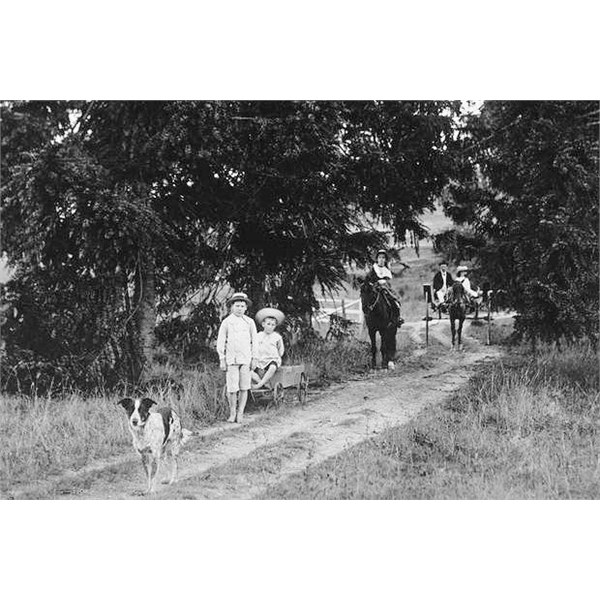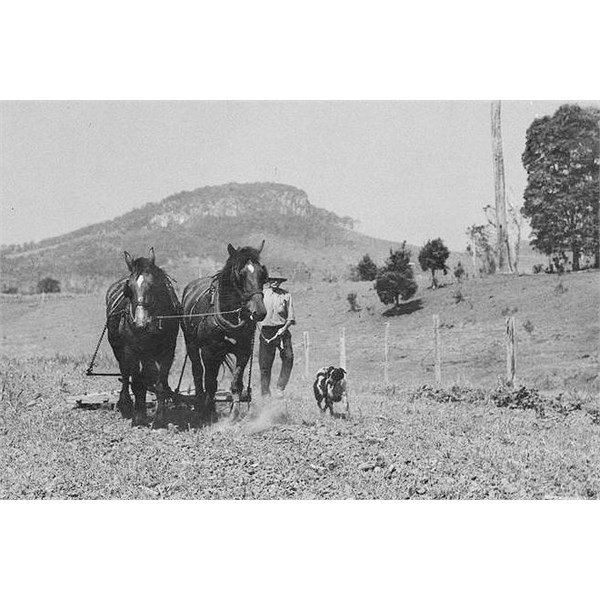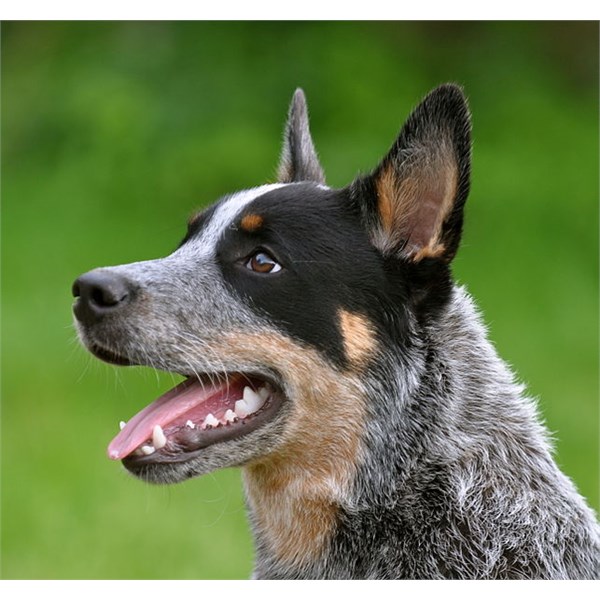The Halls Heeler was a dog bred by Thomas Simpson Hall to herd cattle on the Hall family's extensive properties in north-western New South Wales in the 19th century. On Dartbrook Station, in the Upper Hunter Valley, Hall selectively crossed the offspring of Northumberland Drover's Dogs that he had imported, with progeny of dingoes that he had tamed. By 1840 he had bred the type of dog that he needed to control cattle on the massive runs that his family owned, and until he died in 1870 few of these dogs were owned and used by anyone outside the Hall family and their workers. However the death of Thomas Hall and the break-up of the Hall estate coincided with the development of the dog show, and an interest in breeding dogs to specific criteria or standards. The Halls Heeler was further developed into two contemporary dog breeds the Australian Cattle Dog and the Australian Stumpy Tail Cattle Dog.

Thomas Simpson Hall 1832
By the 1890s, the dogs had attracted the attention of the Cattle Dog Club of
Sydney, a group of men with a recreational interest in the new practice of showing dogs competitively. They reportedly adopted the term Australian Cattle Dog to refer to the dogs being bred from bloodlines originating from Thomas Hall's "heelers", and prominent members of the group concentrated on breeding these lines. Of these breeders, the Bagust family was the most influential. Robert Kaleski, of Moorebank, at the time a
young associate of Harry Bagust, noted that in 1893 cattle dog breeders had begun to "fix the type" so he drew up a standard for them on those lines.
George Hall and his family arrived in the New South Wales Colony in 1802. By 1825, George's son Thomas Simpson Hall and some of his older brothers had established two cattle stations in the Upper Hunter Valley, Gundebri near the present day Merriwa, and Dartbrook near
Aberdeen. In the 1928 census Thomas Hall is described as 20 years old, and the manager of Dartbrook. Using this property as a
home base, Hall began a northward expansion into the Liverpool Plains,
New England and Queensland, setting up properties for the family and eventually controlling over a million acres of good grazing land.
On Dartbrook Thomas Hall set about breeding the cattle needed to stock these extensive holdings, and developed a herd of polled shorthorn cattle from stock imported from Durham in 1930. Getting the cattle to the
Sydney markets presented a problem in that thousands of head of cattle had to be moved for thousands of kilometres along unfenced stock routes through sometimes rugged bush and mountain ranges. A note, in his own writing, records Thomas Hall's anger at losing 200 head in scrub. A droving dog was desperately needed but the colonial working dogs are understood to have been of Old English Sheepdog type (commonly referred to as Smithfields,) useful only over short distances and for yard work with domesticated cattle. Thomas Hall addressed the problem by importing several of the dogs used by drovers in Northumberland, his parents’
home county. At this time dogs were generally described by their job, regardless of whether they constituted a ‘breed’ as it is currently understood, and in the manner of the time these blue mottled dogs were known as the Northumberland Blue Merle Drovers Dog.

An early Australian Cattle Dog, photographed in 1902

Cattle Dogs were accustomed to horses in the 1900s.
Thomas Hall crossed his Drovers Dogs with dingoes he had tamed and then continued to selectively cross breed until 1840, when he was satisfied with his resultant breed. This working cattle dog was so suited to the Hall's needs that no breed changes were considered necessary by Thomas for the rest of his life. During the next thirty years, the Halls Heelers, as they became known, were used only by the Halls and those who worked for them. Given that they were dependent on the dogs, which gave them an advantage over other cattle breeders, it is understandable that the dogs were not distributed beyond the Hall's properties. It was not until after Thomas Hall's death in 1870, when the properties went to auction with the stock on them that Halls Heelers became freely available.
Jack Timmins was a contract drover working in the Upper Hunter Valley and was employed by the Hall family to take cattle to the
Sydney markets. In the late 1840s he obtained a pair of Halls Heelers, from which he bred a line of dogs that he described as "great biters", a characteristic which led to the dogs being called Timmins Biters. Robert Kaleski referred to them as "wonderful workers" in an article titled The Working Dogs of Australia in 1911. Other Hall associates, particularly those on properties distant from Dartbrook near the Queensland border, were also breeding their own dogs from Halls Heeler stock.
In the 1940s Alan McNiven, a
Sydney veterinarian, introduced
Dingo, Kelpie, German Shepherd, and Kangaroo Hound into his breeding program; however, the Royal Agricultural Society Kennel Club (RASKC) would not register the cross breeds as Australian Cattle Dogs, even though McNiven argued they were true to conformation, colour and temperament. McNiven responded by giving his pups registration papers from dead dogs, and was consequently expelled from the RASKC and all of his dogs removed from the registry. Meanwhile, Greg Lougher, a Napa, California cattle rancher who met Alan McNiven while stationed in Australia during World War II, had imported several adults and several litters from McNiven. After his de-registration McNiven continued to export his ‘improved’ dogs to the US. Many US soldiers who were stationed in Queensland or NSW during the War discovered the Australian Cattle Dog and took one
home when they returned.

Soldiers stationed in Australia during WWII played a role in the breed's introduction to the US.

This puppy is being bathed in preparation for a visit by General Douglas MacArthur.
In the late 1950s a veterinarian in Santa Rosa, California, Jack Woolsey, was introduced to Lougher’s dogs. With his partners, he bought several dogs and started breeding them. The breeders advertised the dogs in Western Horsemen stating they were guaranteed to work and calling them Queensland Heelers. Woolsey imported several purebred Australian Cattle Dogs to add to his breeding program, including Oaklea Blue Ace, Glen Iris Boomerang and several Glen Iris bitches. The National Stock Dog Registry of Butler, Indiana, registered the breed, assigning American numbers without reference to Australian registrations.
Australian Cattle Dogs had been classified in the "miscellaneous" category at the American Kennel Club (AKC) since the 1930s, to get the breed full recognition, the AKC required that a National Breed Parent Club be organised for promotion and protection of the breed. In 1967 Esther Ekman met Chris Smith-Risk at an AKC show, and the two fell into conversation about their Australian Cattle Dogs and the process of establishing a parent club for the breed. By 1969 the fledgling club had 12 members and formally applied to the AKC for instructions. One of the requirements was that the Club had to start keeping its own registry for the breed and that all dogs on the registry would have to be an extension of the Australian registry, tracing back to registered dogs in Australia. The AKC Parent Club members began researching their dogs, including exchanging correspondence with McNiven, and discovered that few of them had dogs that could be traced back to dogs registered in Australia. The AKC took over the club registry in 1979 and the breed was fully recognised in September 1980. The Australian Cattle Dog Club of America is still active in the promotion of the breed and the maintenance of breed standards. The National Stock Dog Registry continued to recognise Cattle Dogs without prerequisite links to Australian registered dogs, on the condition that any dog of unknown parentage that was presented for registry would be registered as an 'American Cattle Dog', and all others would still be registered as 'Australian Cattle Dogs'.

Blue Heeler Cattle Dog

Thomas Simpson Hall monument

Red Heeler Cattle Dog
In 1976 a monument to Thomas Hall's achievement was erected on Dartbrook Road at the Blue Heeler
Bridge in Dartbrook, New South Wales. The
plaque inscription says: "This
plaque presented by The Australian Cattle Society of NSW commemorates Thomas S. Hall of Dartbrook who in 1840 in this area carried out his breeding experiments with the native dog the
dingo and a pair of smooth coated blue merle collies. These dogs known as Halls Heelers became the foundation of today's breed the Australian Cattle Dog.
.